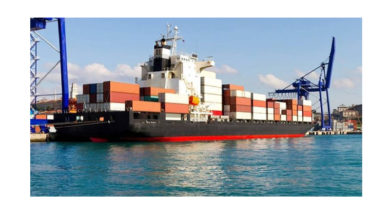What’s Next For The Newspapers?
Newspaper publishers around the world are struggling to make newspapers attractive and respond to the changing competitive environment in the digital era. Not an easy task. The young generation is looking elsewhere for their daily dose of news. Internet and its offspring social media networks are now the primary source of news for not only younger generation but also older ones who are also finding Internet a convenient platform to get the information they need. In our region newspapers are still popular but that doesn’t mean they are immune to the forces that are shaping the future of newspapers all over the globe.
 So what’s next for newspapers? Since 2005 newspapers in US lost more than 50% of their advertising. Europe is facing the similar scenario. However newspapers are still a reliable source of accessing news that have been gathered and produced professionally. Jeff Bezos founder of Amazon.com recently purchased Washington Post for an exorbitant amount of 250 Million dollars. Washington Post has been one of the most influential newspapers in US. The reason behind this purchase is still a mystery to many. According to Bezos Washington Post which has won many accolades including 47 Pulitzer prizes is worth saving. The newspaper was struggling financially and Bezos rescued it from an almost certain bankruptcy. Now the question is why Bezos who has defined online shopping has decided to become savior of something that belongs to the past? Nostalgia? Maybe he thinks something worth saving even if it’s no longer relevant.
So what’s next for newspapers? Since 2005 newspapers in US lost more than 50% of their advertising. Europe is facing the similar scenario. However newspapers are still a reliable source of accessing news that have been gathered and produced professionally. Jeff Bezos founder of Amazon.com recently purchased Washington Post for an exorbitant amount of 250 Million dollars. Washington Post has been one of the most influential newspapers in US. The reason behind this purchase is still a mystery to many. According to Bezos Washington Post which has won many accolades including 47 Pulitzer prizes is worth saving. The newspaper was struggling financially and Bezos rescued it from an almost certain bankruptcy. Now the question is why Bezos who has defined online shopping has decided to become savior of something that belongs to the past? Nostalgia? Maybe he thinks something worth saving even if it’s no longer relevant.
Good News
During Wan Ifra Middle East conference held in Dubai in 2014. Top newspapers revealed their strategy and solutions to face the new realities. The good news is newspapers are learning how to face the new challenges. Almost all the major newspapers have launched apps for iPads and Android tablets. Digital subscription now is a norm and many newspapers are focusing on exclusive articles and interviews rather than news. The traditional hierarchical structure of newspapers no longer works. In a modern newspaper all the editorial staff should be collaboratively engaged in creative process. The whole organization should be involved in the process of generating ideas and turning them into reality. At the end of the day newsroom is the workplace.
Be prepared for ambiguity
Today many newsrooms and organizations are run by an industrial mindset. But the world is shifting to a postindustrial mindset which demands worker autonomy and responsibility, lateral feedback and collaboration and constant learning. Newspapers have to hire people with knowledge. In today’s world unpredictability is the norm and unlike good old days ambiguity rules. Newspaper is not the only industry in transition. We are living in a state of flux and tomorrow’s organizations need an agile culture, where innovation is habit and staff are comfortable with ambiguity and perfecting legacy products.
Newsrooms today are quite different from what it used to be. Newsrooms today create new products, new ways of working and new ways of telling stories. Newsrooms today should make stories easier for readers to engage with in our fast changing technological age.
State-of-the-art newspaper technology
Money and giveaways in newspapers are tempting prospects for just about every reader. Integrated Inkjet applications have become increasingly popular thanks to attractive lotteries and other competitions. Nevertheless, inkjet newspaper imprinting offers even more exciting facets and applications.
 2012 was a good year for inkjet imprinting in newspapers: Lotteries in the German daily “BILD” brought this application to a broad readership in Germany for the first time. Now, interest is growing across the European continent. At an event in late 2012 at the Ahrensburg printing site, the world’s first pilot installation of Integrated Inkjet, 70 newspaper experts from 10 countries received a closer glimpse at the application. In Ahrensburg, Axel Springer equipped two of its six COLORMAN newspaper rotary presses with an inkjet imprint system from Kodak for variable data printing. Two additional installations are in operation at the Spandau printing facility on the outskirts of Berlin, Germany. The COLORMAN system printed an international newspaper edition with inkjet imprints of varying images and raffle numbers for the visitors. During the event, topics such as the addition of other variable information to static newspaper content were also addressed. Variable QR codes, graphics, and text information offer target group-specific advertising, the latest news, a platform for cross-media marketing campaigns, and logistical support.
2012 was a good year for inkjet imprinting in newspapers: Lotteries in the German daily “BILD” brought this application to a broad readership in Germany for the first time. Now, interest is growing across the European continent. At an event in late 2012 at the Ahrensburg printing site, the world’s first pilot installation of Integrated Inkjet, 70 newspaper experts from 10 countries received a closer glimpse at the application. In Ahrensburg, Axel Springer equipped two of its six COLORMAN newspaper rotary presses with an inkjet imprint system from Kodak for variable data printing. Two additional installations are in operation at the Spandau printing facility on the outskirts of Berlin, Germany. The COLORMAN system printed an international newspaper edition with inkjet imprints of varying images and raffle numbers for the visitors. During the event, topics such as the addition of other variable information to static newspaper content were also addressed. Variable QR codes, graphics, and text information offer target group-specific advertising, the latest news, a platform for cross-media marketing campaigns, and logistical support.
Winning readers: With variable number codes, Integrated Inkjet is the ideal solution for lotteries with unique ticket numbers. The Hamburg regional edition of the BILD ran its “Cash Million” campaign for six weeks starting in April 2012. The technology behind the lottery tickets convinced the printing house: instead of using supplements, the individual tickets could be imprinted in the newspaper using the inkjet system.
Effective advertising: With Integrated Inkjet, advertisers can create customized, “hyperlocal” ads. A bakery chain can use the same motif to advertise its pretzels in store A and its farmers bread in store B; the prices and store addresses are adapted based on the location.
Endless cultural variety: As with commercial advertising, inkjet imprints are also ideal for local events and their locations, for example concert or theater tours.
More up-to-date: What’s today’s weather forecast? An ever-recurring question that just got easier to answer thanks to last-minute imprinting. The latest top news and sports results make it clear: inkjet makes your daily even more up-to-date.
Code name: Inkjet: Inkjet barcodes convey additional tailor-made content. By linking print and Internet documents, readers can receive route maps, information on lotteries, product descriptions, or videos with just a click on their mobile phone.
Flawless logistics: Imprinted barcodes support the logistical organization of printed products. The barcode makes it easier to plan the distribution and truck shipments, and record returns. Sequential recording processes become more efficient; human error in manual data entry is eliminated.
Digital printing at the service of newspaper industry
Today there are a number of companies who are offering digital presses for newspaper industry including Screen, Canon, HP, manroland, KBA, Fujifilm among others. There are also advanced finishing systems from companies such as Hunkler targeted at newspaper industry. Digital printing offers numerous advantages for newspapers including remote distribution, flexibility with formats changeover on the fly, no start up waste, less process control and lower labour costs. Based on a report published by Wan Ifra there is at any rate a growing interest in digital newspaper printing, and the topic is increasingly being talked about in the industry. According to the report some years ago, when Stroma in London and later Miller Newsprint in Malta began producing international newspapers, it drew little attention in the industry.
 There was a general consensus that digital newspaper printing was a niche application and destined to remain so for a long time. The limitations in speed, costs, output format and colour appeared so massive that the technology could never match offset, let alone surpass it.
There was a general consensus that digital newspaper printing was a niche application and destined to remain so for a long time. The limitations in speed, costs, output format and colour appeared so massive that the technology could never match offset, let alone surpass it.
But exactly that kind of thinking was wrong. Digital printing is not supposed to compete with offset; rather, it is intended to capture new business areas.
The report investigates the business case for digital printing, the current use of digital printing in newspaper production and examines the latest case studies in the USA, Italy and Germany. Among the topics are these:
Digital printing as a distribution concept: Distributors were the first to develop a business model exploiting digital printing. The production of foreign newspapers allows distributors to sell copies on the day of publication without expensive air freight costs – an attractive offer.
Short print runs: Many newspaper printing plants are independent businesses that are constantly seeking additional print jobs – but producing small jobs on a large offset press is not cost-efficient. This is where a digital press can demonstrate its potential to the maximum.
Hybrid printing: Ink-jet imprinting in offset-produced newspapers is a brilliant idea, since it combines the best of both technologies and opens up entirely new marketing opportunities.
Beyond news
Today there are many free news sources so what distinguishes newspaper from other media is its rich and distinctive offerings which includes editorial as well as news. News UK is part of News Corp and publishes The Times, The Sun and The Sunday Times in UK.
The company is perhaps a prime example of successful newspaper publisher. These newspapers have a bundled offering strategy. But at the centre of the bundle is the news worth paying for.
According to News UK newspapers today must evolve from a business of anonymous daily transactions to one built on customer relationships in which the newspaper knows who its customers are and collect relevant data about them, extending those customer relationships beyond news.
Is there a future for newspapers?
The answer to this question is not simple. Predicting future is foolish. There was a consensus that if newspapers put their content on the websites the online advertising will flush them with cash. Well it didn’t happen.
The money newspaper publishers are making from online advertisement comparing to print is disappointing. Readers (especially young generation) already migrated to the web, but they mostly ignored the advertisements found there.
Huge printing presses still are churning out millions of pages of printed news. One way to survive is encouraging readers to pay for unbiased and professionally prepared news and contents. Paywall could be a good solution. Internet has been around for more two decades but newspapers survived. Future of newspaper is not written yet.





